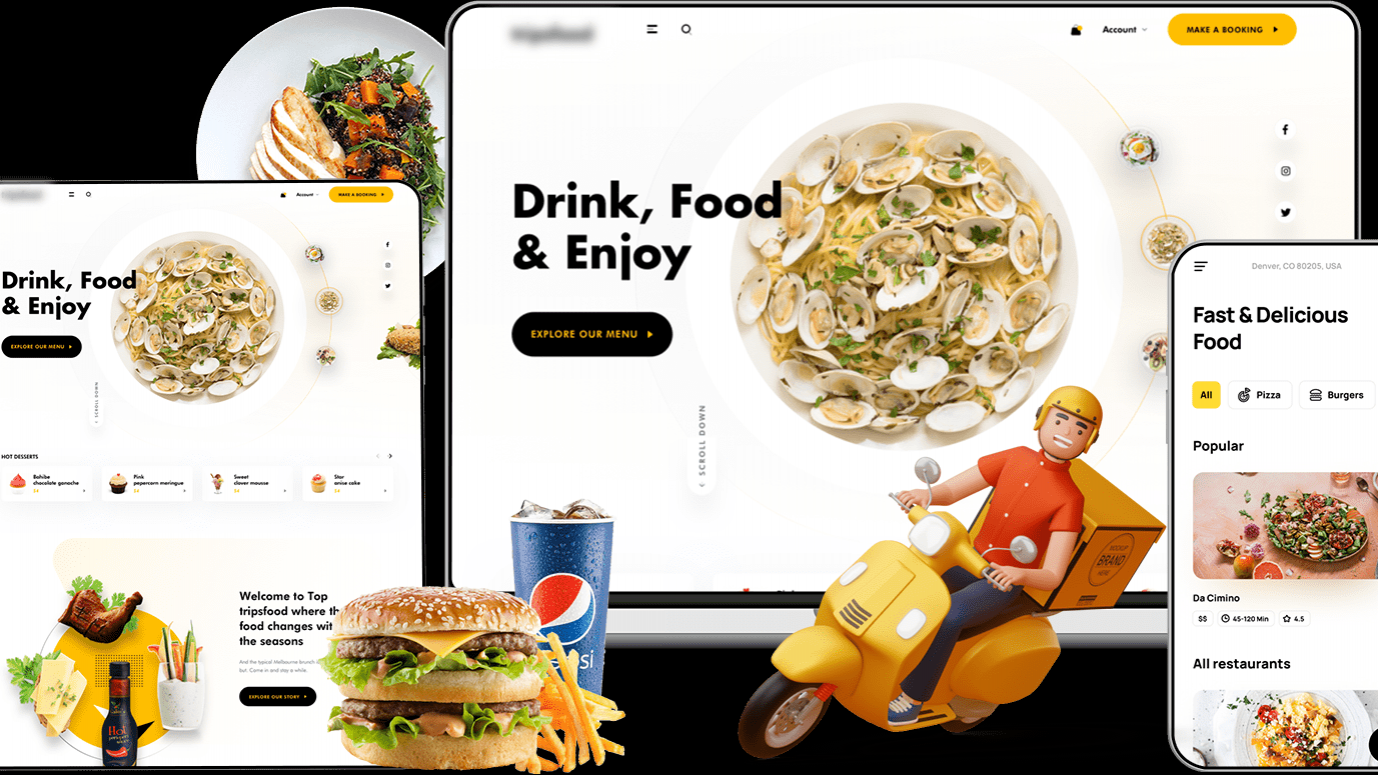Fragmented Delivery Experience Is Driving Users Away
Food Delivery app development has evolved into a strategic necessity for food businesses—but many apps fail to deliver the consistent experience users expect. A significant percentage of users abandon food delivery platforms due to issues such as inaccurate order tracking, delayed deliveries, poor interface design, or lack of customer support.
According to an internal benchmark study across multiple regions, 25–30% of users churn within the first three interactions when their experience is inconsistent. This is not just a tech problem—it’s a business threat tied directly to user retention and brand perception.
Agitate: Operational Flaws Are Costing Real Revenue
Behind user dissatisfaction often lies a set of disconnected systems. When the app fails to integrate seamlessly with restaurant inventory, delivery logistics, and user preferences, delays and order inaccuracies become inevitable.
In one city-level rollout of a mid-tier delivery app, an audit revealed that 17% of orders were delayed due to miscommunication between the kitchen and courier, resulting in refund requests, negative ratings, and poor app store visibility. Moreover, poor visibility into real-time delivery status, missing route optimization features, or outdated menus can create friction at every step, lowering order completion rates and weakening lifetime customer value.
Solution: Build a Reliable, Scalable, and Insight-Driven Food Delivery App
To solve these challenges, Food Delivery app development must shift from feature-centric to process-centric. It’s about building a stable infrastructure that enhances the user journey while optimizing business operations in parallel.
Here’s how successful app development can bridge the gap:
1. Seamless Order Lifecycle Integration: A successful food delivery app handles the complete lifecycle—from browsing to delivery—with minimal friction.
Key capabilities include:
* Real-time syncing of menus and item availability
* Delivery time estimation powered by live traffic APIs
* Dynamic order tracking with delivery status updates
* Integration of payment gateways with fraud checks
In a case study of an app rollout in a Tier-2 city, these features reduced order abandonment by 29% in just six weeks.
2. Rider and Restaurant Operations Panel: Behind every successful food order is a synchronized chain involving kitchen staff and couriers.
Providing dedicated dashboards for these stakeholders can:
* Streamline preparation and dispatch coordination
* Track peak-hour demand and reroute orders
* Enable shift-based rider management
* Provide analytics for prep times and delivery speed
A business that adopted these tools achieved 21% faster delivery times and reduced manual errors by half.
3. Smart Analytics and User Retention Mechanisms: Without embedded analytics, businesses miss insights that drive retention.
Data-backed Food Delivery app development helps in:
* Identifying repeat customer behavior
* Highlighting peak-order windows
* Segmenting users by cuisine, location, and spend
* Sending automated re-engagement campaigns
Apps utilizing behavior-driven notifications saw a 40% lift in weekly user engagement and a 15% increase in re-orders.
4. Scalability as a Core Foundation: Apps built only for MVP stages often collapse under user growth.
To future-proof the system, app development should consider:
* Microservice-based architecture for modular growth
* Load balancing during lunch/dinner rush
* Secure and scalable cloud storage for order history
* Compatibility with third-party logistics and CRM tools
One platform that switched to a scalable backend reduced server crashes to **0% during a festival with 3x normal traffic.
5. Personalization and Loyalty Integrations: User loyalty can’t be bought—it must be earned through personalized experiences.
Advanced features like:
* AI-based dish suggestions based on previous orders
* Scheduled ordering for preferred times
* Geo-targeted offers based on user location
* In-app wallet with rewards or cashback
These led to double the average order value in a live A/B test comparing static vs. personalized user journeys.
Conclusion: Food Delivery App Development Requires Real-World Awareness
The success of Food Delivery app development lies in its ability to merge technical excellence with practical user needs. Whether it’s accurate tracking, smooth payments, or timely delivery, every feature must serve a business purpose and improve the customer journey.
By focusing on reliability, operational transparency, and data-informed decisions, businesses can create apps that not only survive in a saturated market but thrive.









